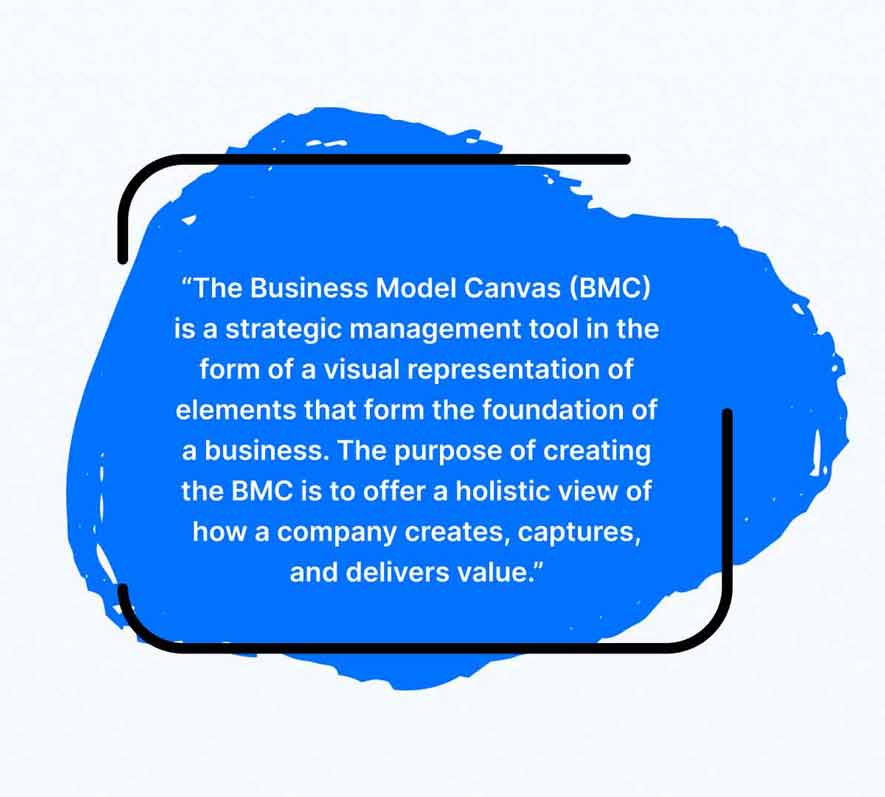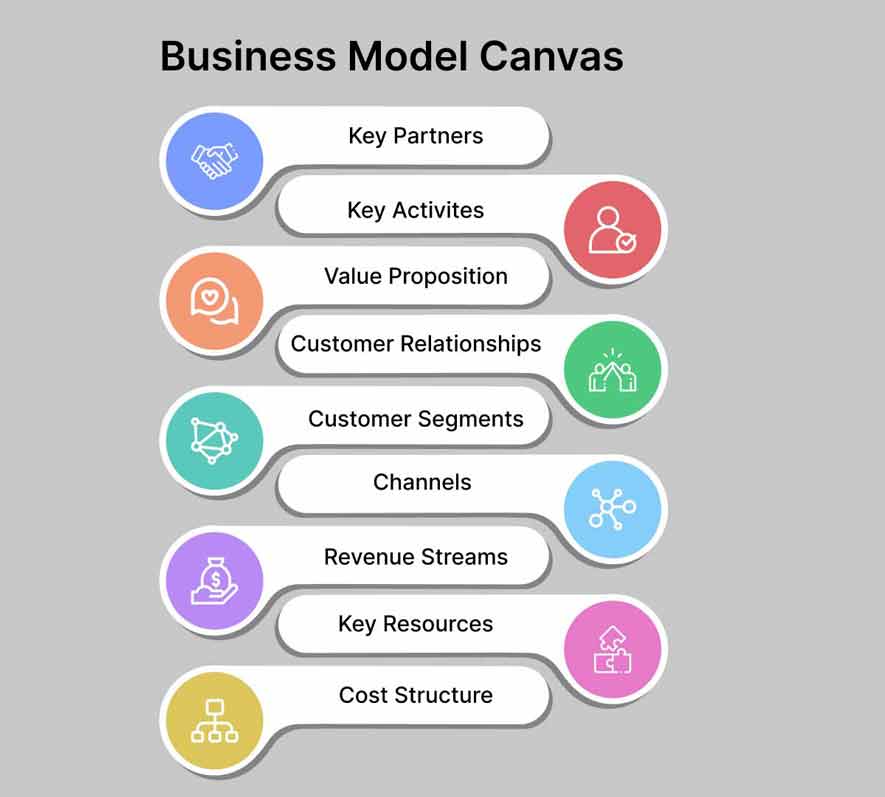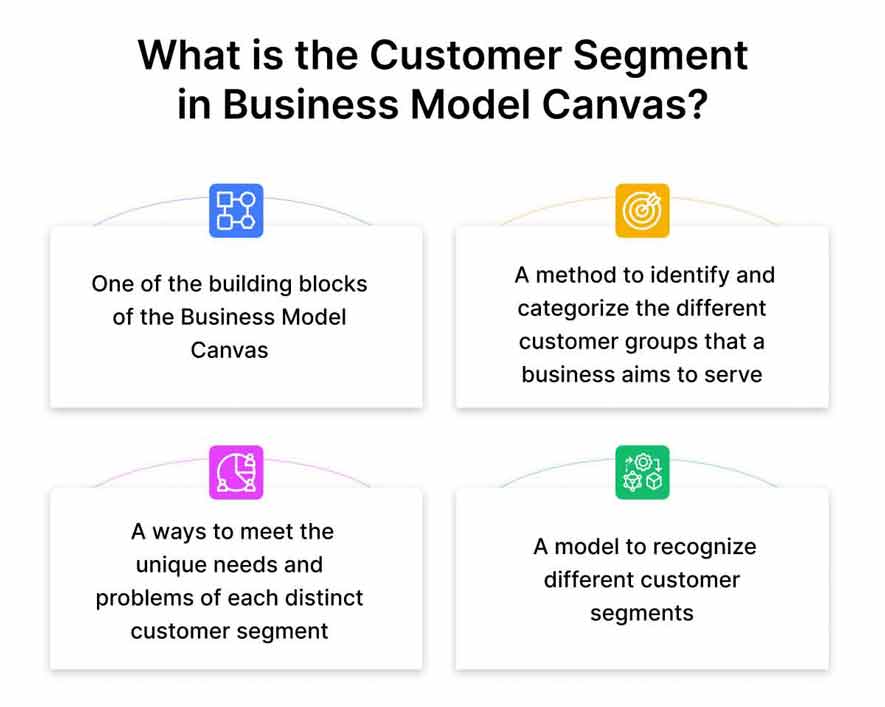A Guide on Customer Segments of the Business Model Canvas
- December 18, 2023
- 12 mins read
- Listen

Table of Content
Customers are the reason a business exists and flourishes!
Many business leaders, however, make the mistake of staying too busy with other aspects and ignoring what matters the most: customers. Some businesses don’t have a proper framework to understand their customers. Neither do they understand customer segments nor take measures to meet the expectations of the audience.
This is where a business model framework helps, as it gives you both vision and clarity.
The Business Model Canvas works as a tool to understand customer segments better and then devise the right strategies to cater to their specific needs.
In this blog, we will explore customer segmentation encapsulated within the Business Model Canvas. We will also understand how this model is key to aligning business strategies with the diverse needs of varied customer segments.
Before moving further, let’s get started with understanding what exactly the Business Model Canvas is…
What is the Business Model Canvas (BMC)?
The Business Model Canvas (BMC) is a strategic management tool in the form of a visual representation of elements that form the foundation of a business. It was developed by Swiss entrepreneur and business expert Alexander Osterwalder to outline the various aspects of a business in a structured manner.

The purpose of creating the BMC is to offer a holistic view of how a company creates, captures, and delivers value. As a tool, it’s key to conceptualize, analyze, and optimize their business models so that the business can achieve strategic development and foster innovation.
The Business Model Canvas acts as a blueprint to design and build models with a systematic approach. It helps businesses carry out a high-level analysis while keeping sight of the key things in the maze of details.
Structure of the Business Model Canvas
The Business Model Canvas is an extremely fluid concept that can serve businesses across industry verticals. It can be specific to individual companies where each canvas can be further broken down into 9 blocks. These nine blocks make up the key aspects of a business.

Here are the 9 building blocks of the Business Model Canvas –
1- Customer Segments – This block defines the target audience or different groups of customers a business aims to cater to.
- Value Proposition – This block defines the unique value proposition a business offers to its customers to solve their problems and meet their needs.
- Channels – This block defines the channels or methods used by businesses to reach, engage, and interact with customers.
- Customer Relationships – This block details the relationships the business establishes with its varied customer segments.
- Revenue Streams – This block identifies the revenue streams for the business or the sources from where it generates revenue.
- Key Resources – This block details all the resources needed to serve customers and effectively deliver the value proposition.
- Key Activities – This block defines the most important activities performed by the business to stay operational.
- Key Partnerships – This block details all the collaborations that a business undertakes to optimize resources and operations.
- Cost Structure – This block outlines all the costs a business incurs to run the operations successfully.
What is the Customer Segment in Business Model Canvas?
The customer segment is one of the building blocks of the Business Model Canvas that identifies and categorizes the different customer groups that a business aims to serve. Understanding the customer segments is key to creating effective marketing strategies and developing personalized products or services.

Customer segments serve a variety of purposes for the business, including –
- It helps businesses identify the unique needs and problems of each distinct customer segment and cater to those needs.
- A business can recognize different customer segments to create a differentiation in the market and stand out among competitors.
- Understanding customer segments is essential for businesses to be apt in resource allocation and prioritize customer interests.
Elements of Customer Segments
Customer segments comprise various elements that assist businesses in understanding different customer groups or markets. These elements are essential to creating customer-centric strategies, products, and services.
Key elements of customer segments include –
Demographics
It provides insights into the quantifiable traits and characteristics of customers. They give ideas about different customer groups based on specific attributes. The key elements include Age, Gender, Education, Income Level, and Occupation. The demographics data is very helpful in understanding the needs and preferences of customer segments.
Psychographics
These elements offer a peek into the values, interests, attitudes, and lifestyles of customers. They are essential for understanding customers’ motivations and preferences so that a business can tailor their strategies accordingly. The key aspects include Lifestyle, Values and Beliefs, Attitudes, and Personality Traits.

Geographic Segmentation
Customer segmentation based on their geographic location is vital to understanding the behaviors and preferences of customers in their region or geography. This segmentation is essential for understanding cultural differences and unique preferences of the audience in different geographic areas. Key aspects include Location, Climate, and Cultural Differences.
Behavioral Segmentation
The main focus of behavioral elements is to understand how customers behave and interact with the brand, its products, or its services. Here, customer segmentation is based on usage patterns, purchasing habits, and brand loyalty. It includes an analysis of Purchasing Behavior, Usage Patterns, and Brand Loyalty.
Needs and Preferences
For a business, it’s important to understand the needs and pain points of customers within each segment. Without knowing what customers like and what not, a business won’t be able to meet the needs of its specific customer segments. Key aspects include identifying needs, preferences, challenges, and pain points.
Creating Customer Segments – A Step-by-Step Process
Creating and utilizing customer segments is key to the success of an enterprise. A business that creates customer segments can enhance marketing strategies and improve customer satisfaction. All this can add to the overall business growth.
Here is a step-by-step guide to creating customer segments –
Step 1 – Define goals and objectives
A business that plans to create customer segments should clearly define the purpose. It should know beforehand whether it wants to segment customers to improve marketing effectiveness, increase sales, or enhance customer experience. Once the goals are defined, the next step is to set specific objectives and KPIs. This will help in measuring the success of your segmentation strategy.
Step 2 – Collect relevant data
A business can never segment customers effectively unless it has relevant data. When the data is accurate, it helps deliver value with segmentation. The important thing is to collect data from various sources and also ensure its quality.
Step 3 – Identify criteria for segmentation
There are different variables for segmentation, and it will entirely depend on the needs of the business to choose one of them. You can select from demographics, geography, psychographics, or behavioral variables. It’s also equally important to consider factors that have an impact on the way customers engage with your products or services.

Step 4 – Segment the data
Now that you have data and have identified the criteria for segmentation, the next step is to segment the data using the right tools and techniques. It’s important to group customers based on the segmentation variables chosen.
Step 5 – Create customer personas
After segmenting data, you need to move ahead to developing detailed profiles for each segment. The personas you create should describe the needs, preferences, behaviors, and characteristics of your audience. With the help of profiles or personas, you will be able to craft targeted strategies and messages for your customer segments.
Step 6 – Test and validate segments
The segments you have created need to be tested to check their validity against different parameters. Without validating the segments, you might not know whether they are unique, actionable, and substantial. You must use statistical methods to validate those segments against the pre-defined goals.
Step 7 – Develop strategies for each segment
Each segment will be unique and distinct. So, your focus should be on developing strategies for each of them so that you can tailor your marketing messages and offers accordingly. With a segment-specific strategy, you can better craft experiences and services based on the personas of the segment. You can also design campaigns resonating with the unique traits of each segment.
Step 8 – Execute the strategies
Now is the time to implement and monitor your strategies across relevant channels. Together with the execution, you must also monitor the performance of each segment to see how it’s doing. Key metrics you can look at in this stage include conversion rates and ROI.
Step 9 – Gather feedback
Collecting feedback and insights is important to know how well your strategies are faring. Based on the feedback, you can always adjust strategies and refine them. You can delve into new data and better understand evolving customer needs and behaviors.
Step 10 – Scale and Expand
Once you have tested and validated the effectiveness of each segment, it means you are now sure about your segmentation strategy. So, you can consider scaling it to other markets and segments or products. Make sure you regularly refine and iterate your strategies to keep them relevant and effective.
Business Model Canvas Examples
The Business Model Canvas is a good way to show the effectiveness of a business in its industry. This model considers all the key aspects and factors that contribute to the growth and success of a business. That’s why we should see some examples from across industries and get the point.
Here are some Business Model Canvas examples to understand things –
1. Netflix
Netflix excels in a very competitive market where many top companies exist. In this industry, other players such as Amazon Prime Video, Disney+, HBO, and YouTube enjoy widespread popularity yet Netflix still enjoys growth. Much of the credit goes to the way it develops its business strategies with an effective business model canvas.

Netflix uses different resources to attract its customers, and its variety of shows are loved by a large audience cutting across genres and geographies. One of the key reasons for Netflix’s success is its heavy investment in a diverse range of content and its adoption of a data-driven approach.
More so, it reaches over 190 counties and ensures innovation for the streaming of high-quality content to its user base. Moreover, Netflix offers a flexible subscription model with different plans that provide a source of revenue streams for the business.
2. Uber
Uber is currently the leader in the transportation industry and is credited with changing the way people commute and access transportation services across locations. When you look at it through the business model canvas, you will realize how it became the world’s largest taxi company without owning a single vehicle.

More so, Uber is a wonderful illustration of a business model canvas as it reflects a great business idea with such innovation in tech. When you see its customer segments, you will find two categories of drivers and rides.
Much of its success relies on the drive partnerships it creates, where the company gives individuals a sense of flexibility in working hours to earn money. Moreover, its continuous investment in technology has been a key reason why it has improved its services and reach.
Get Customer-Centric Data for Segmentation with REVE’s Platform
Data plays a very important role for businesses looking to segment their customers into different categories. Without data, it would not be possible to understand customer needs, preferences, tastes, and pain points.
At REVE Chat, we are aware that quality customer data is not possible without engagement. That’s why we have developed a range of customer engagement tools to help.
You can check out our AI-powered chatbot and use it to automate tasks and engage your customers better. Our bot will not only help streamline tasks across sales, support, and marketing but will also provide useful customer data for segmentation.
Our powerful live chat software can also contribute to your regular customer interactions. When paired with the chatbot, it can fetch tons of useful data on customer preferences, search history, and transaction data.
We also have video chat software, a ticketing system, and co-browsing software to make your customer engagement as effective as it should be.
Final Thoughts
Businesses need to have the right strategy and framework in place to understand their customers well. Using the business model canvas can help as it gives a lot of clarity and vision related to segmenting customers.
With REVE Chat, you can use a range of tools to engage and interact with your audience, get tons of useful data, and then segment your audience based on their challenges and pain points.
With us, you can sign up and get access to some really quality tools that will enable customer segmentation and engagement with ease.
Frequently Asked Questions
The BMC is a strategic tool that visually represents a business’s key elements, like customer segments and value propositions, to help create, analyze, and optimize business models.
They identify the target audience, enabling businesses to tailor strategies, meet specific needs, and allocate resources effectively to enhance customer satisfaction and market differentiation.
Key elements include demographics (age, gender), psychographics (values, lifestyle), geographic location, behavioral patterns (purchasing habits), and customer needs/preferences.
Define goals, collect data, choose segmentation criteria (e.g., demographics), segment the data, create personas, validate segments, and develop tailored strategies for each group.
Netflix targets diverse audiences with varied content, uses data-driven insights to understand preferences, and offers flexible subscription plans to cater to different customer needs globally.



